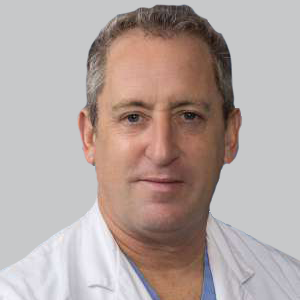Article
AOC 1001 as a Potential Treatment for Myotonic Dystrophy Type 1
Author(s):
Nicholas Johnson, MD, MSci, FAAN, division chief of neuromuscular disorders and vice chair of research, Virginia Commonwealth University, provided insight on promising phase 1/2 data of AOC 1001 in myotonic dystrophy type 1.
Nicholas Johnson, MD, MSci, FAAN

Like other neuromuscular diseases, developing therapies for patients with myotonic dystrophy type 1 (DM1), the most common form of dystrophy, has been a challenge thus far. Despite this, there have been sizable advances in understanding the biology of the disease, as it’s caused by a triplet-repeat in the DMPK gene, resulting in a toxic gain of function mRNA. AOC 1001, an investigational agent developed by Avidity Biosciences, is designed to address the root cause fo DM1 by reducing levels of DMPK.
At the 2023 American Academy of Neurology (AAN) Annual Meeting, held April 22-27, in Boston, Massachusetts, topline findings from the randomized, double-blind, placebo-controlled phase 1/2 MARINA study (NCT05027269) of AOC 1001 in patients with DM1 was presented. Using 38 patients treated to date, data showed directional improvement in multiple functional assessments of myotonia, strength, and mobility. The therapy also hit its target engagement, showing meaningful reduction in DMPK and splicing changes in treated participants. Furthermore, AOC 1001 demonstrated broad splicing improvements in more than a thousand genes impacted by DM1, confirming activity in the nucleus.
Lead investigator Nicholas Johnson, MD, MSci, FAAN, sat down with NeurologyLive® at the meeting to discuss some of the findings, the desperate need for treatments in DM1, and some of the mechanistic advantages AOC 1001 bring. Johnson, division chief of neuromuscular disorders and vice chair of research at Virginia Commonwealth University, also shared input on why it’s important for therapies to show more than just target engagement, and the need for multiple synergistic solutions to an all-encompassing disease like DM1.
NeurologyLive®: Can you provide an overview of what you presented from MARINA?
Nicholas Johnson, MD, FAAN: Myotonic dystrophy type 1 is the most common form of muscular dystrophy. It's slowly progressive and there are no available treatments for the condition. It's caused by a repeat expansion at the end of one of their genes (DMPK). Avidity Biosciences has created a silencing RNA attached to a transparent antibody that gets into the muscle cells and knocks down that repeat, so it has potential to change the course of the disease. They did a phase 1/2 clinical trial with several different dose cohorts, and I presented the top line data. It’s their first level of results from that clinical trial talking about the safety, tolerability, some of the biomarkers, as well as some of the functional endpoints.
Why does AOC 1001 appear to be a promising therapy for DM1, mechanistically?
For myotonic dystrophy, as I mentioned, it's caused by a repeat expansion in the 3 prime untranslated region of the gene. That affects RNA splicing, which causes a number of different physical problems with patients. The silencing RNA binds to repeats, it degrades the transcript—which we don't think you need—it releases proteins, RNA splicing proteins do their job, and reverse RNA splicing occurs. In previous talks, when we look at RNA splicing in this skeletal muscle, we can see that across different dose cohorts series there is an improvement in RNA splicing, along with a reduction in the amount of that toxic DMPK transcript. So it's promising biomarker data.
Is reaching target engagement enough for these therapies or does there need to be more functional benefits observed before we’re ready to claim them efficacious?
There hasn't been other therapeutic development in myotonic dystrophy. Avidity Biosciences, along with a company called Dyne therapeutics, are developing disease modifying therapies for this particular condition. For this compound, the currently data in the trial suggests that they are able to see functional benefit, particularly with their higher dose cohorts, which was not statistically significant, but definitely trending in that right direction. This would suggest that they need to just do one more study and hopefully, they can move forward.
As opposed to tofersen (Qalsody; Biogen) and other slowly progressive neuromuscular conditions (ALS), it turns out that in myotonic dystrophy, people have myotonia. This is part of the disease name, and means that they have trouble opening their hands, relaxing their grip, and that appears to be quite sensitive to a little bit of change. Rather than having to wait for 6 months or a year to see that 10 meter walk/run change, or anything else, it looks like you can see the myotonia improved quite quickly.
Outside of treatments, what are some of the main unmet needs for patients with DM1?
Right now, there are no available disease modifying treatments, so that is a big need. But I think even when we get past that first round of treatments, myotonic dystrophy affects both the skeletal muscle, the heart and lungs, but also the brain. Not all of these disease modifying treatments have the potential to cross the blood brain barrier. There is an unmet need or a gap, even once we get past this first round, to find treatments for the brain. We know it takes, on average, about seven years for patients to get diagnosed. We need to find better diagnostic strategies, get people into clinic, and get them involved in all the exciting research that's happening in our field.
Transcript edited for clarity.





